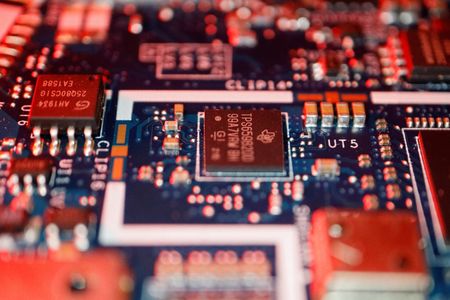By Jane Lanhee Lee
OAKLAND, Calif. (Reuters) – Funds from the recently passed $52 billion Chips and Science Act should be used to upgrade existing U.S. research and development infrastructure as well as building new facilities, a chips industry body said on Thursday.
The Semiconductor Industry Association (SIA) on Thursday called for a careful examination of existing R&D infrastructure, including facilities such as the Albany NanoTech Complex in New York and other government and research spaces.
In addition to tens of billions of dollars for building back U.S. chip manufacturing capacity, the Chips and Science act carved out $2 billion for the Defense Department and $11 billion for the Commerce Department to allocate for chip R&D.
“In the semiconductor industry, that kind of money, especially when we’re talking about efforts towards scale up, will be spent very, very quickly. So it’s really important that an understanding of where the existing infrastructure is provided, so that it can be leveraged,” said Eric Breckenfeld, director of technology policy at SIA, which released a report with Boston Consulting Group suggesting how the funding could be spent.
Breckenfeld said the Defense Department funding would mainly go to existing programs, while the Commerce Department funding will be allocated through two new government entities – the National Semiconductor Technology Center (NSTC) and the National Advanced Packaging Manufacturing Program (NAPMP).
The goal of the Chips Act R&D funding would be to fill a gap in the so-called “valley of death” between early stage research and mature commercial technologies, which are both well funded in the U.S., he said.
While the Commerce Department hasn’t given a detailed road map of how the NSTC and NAPMP would be governed, Breckenfeld said there will likely be several technology hubs in different regions specializing in different parts of semiconductor technologies, such as materials or packaging.
Regional competition was emerging to secure those hubs, he added.
(Reporting By Jane Lanhee Lee; editing by Richard Pullin)

